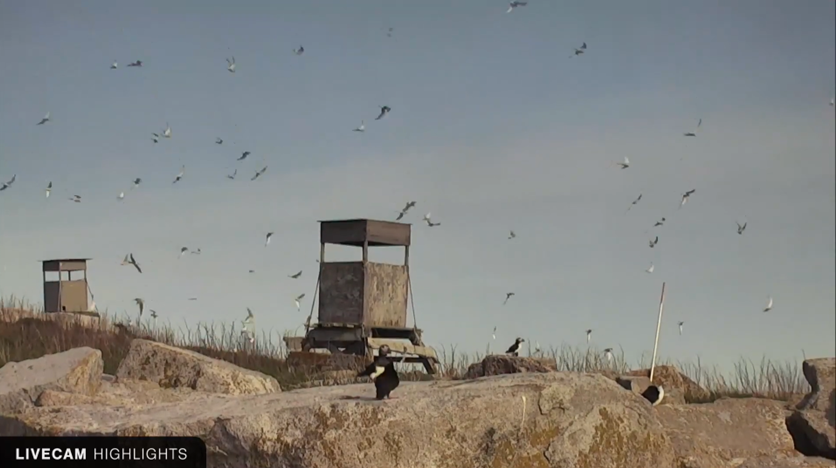Enjoying Outside, Inside - Wildlife Live Cams

Audubon Puffing Loafing Ledge (audubon.org)
If you’re looking for a break from an all-too-indoors day, wildlife live cams are a great way to reset your brain. Wildlife live cams aren’t just entertaining; they give thought-provoking glimpses into wildlife, their behavior, and their relationship with humans. You can find bird cams, bear cams, underwater cams, watering hole cams, zoo cams, aquarium cams, even simply gorgeous scenery cams. Whatever your interest, there’s probably a live cam for you.
Live feeds stream from all over the world. Many cams have a lot of activity at some seasons or times of day, and very little at others. The camera may be solar powered, so there may not be much to see at night. Most of them are set up by non-profits, who have extra information on the wildlife you’re seeing, often including times when you can see the most wildlife. They may have highlight videos that are especially entertaining or illuminating. Most of them have sound, too, so you can listen to rushing waterfalls or chirping birds.
Here is a non-exhaustive list of live feeds to check out!
- In the recent Condor article I mentioned a Condor Cam at All About Birds. The chick is now old enough to explore outside the nest, and they have highlights of it spreading its wings. More condors are at Ventana Wildlife Society, which has 2 cameras inside breeding sanctuaries and one in a nest.
- All about Birds has a wide variety of other bird cameras, and each one has a Twitter feed so you can find out when there’s activity. They also have highlights on Instagram and YouTube. I especially enjoyed the New Zealand Royal Albatross feed, which has a lovely seascape even when the birds aren’t active.
- If you want more bird action, the Audubon Society provides it. Their feed for Ospreys in San Francisco Bay at the populous Red Oak Victory site, even without ospreys, had me thinking about how wildlife finds a way to make a living in a world dominated by humans.
- If sea life is what you’re interested in, the Monterey Bay Aquarium has everything from sea otters to moon jellies, including a 24-hour Monterey Bay cam that rotates among various views of the bay.
- The National Park Service has hundreds of webcams, from sled dog puppies at Denali to scenery at Nez Perce National Historic Park. Some of these are videos; some of these are stills that change moment to moment.
- Saving the best for last: Explore.org has 94 feeds around the world, including several African watering holes. You can go to their “Currently Live” page for a currently active site: Katmai brown bears swimming at Brooks Falls, as I wrote this. No, wait, flying foxes in Florida. No, wait, a bald eagle on Catalina Island. They mean it about exploring! Many of their sites include highlights videos. One of my favorites was watching gorillas spooning each other as they fell asleep at Grace Gorillas.
If some species of wildlife is dear to your heart but you haven’t found it through this list, try searching. Chances are you’ll be able to find a live camera that shows your favorite animal somewhere.
-Amy Boyer
RECENT ARTICLES






